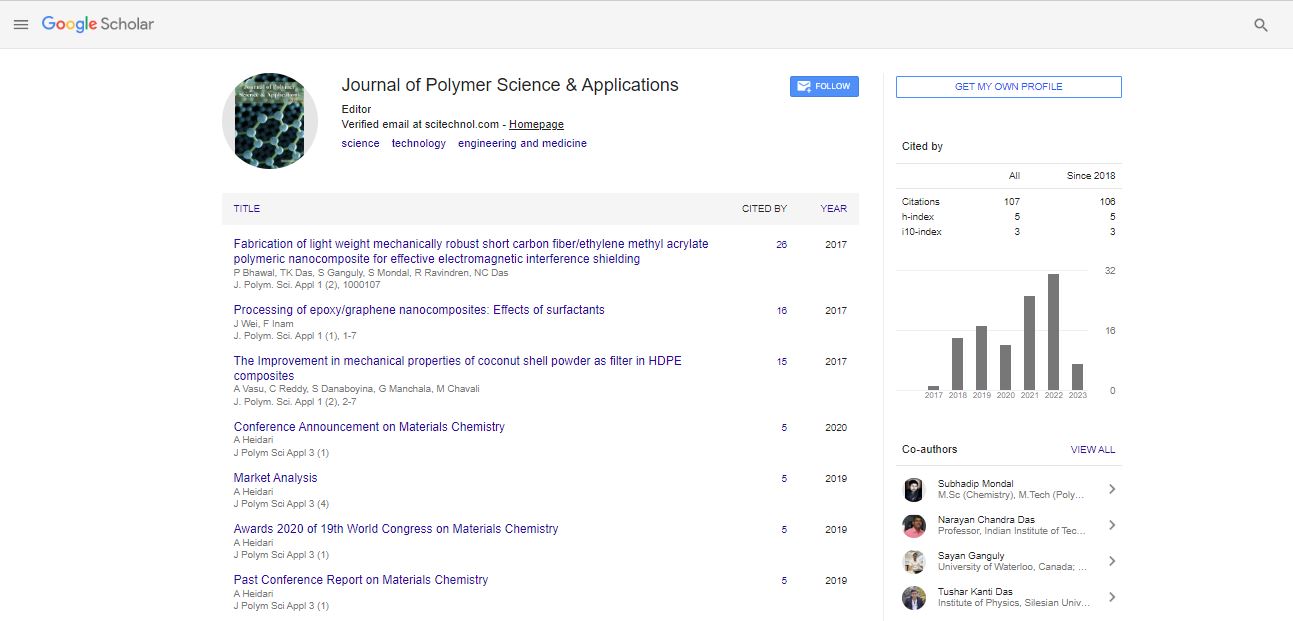Effect of post-treatment of phosphonic acid formed on carbon steel metal surface as anticorrosion nanolayers
T Abohalkuma and J Telegdi
Libyan Petroleum Institute, Libya
Obuda University, Hungary
Institute of Materials and Environmental Chemistry, Hungary
: J Polym Sci Appl
Abstract
Undecenyl phosphonic acid and fluoro-phosphonic acid amphiphilic molecules as anticorrosion nano-layers on carbon steel metal surface were experimented. The formation of these layers was with the use of the self-assembled molecular layer (SAM) method. The focus of experiments was to increase the performance of the Undecenyl phosphonic acid as due to the molecules double bond at the end of the hydrophobic carbon chain, an uncompact SAM layer on the metal surface was formed thus corrosion process on the metal surface took place. To increase the compactness of the nanolayer, post-treatments by UV light and gamma-ray irradiation were applied to polymerize the double bonds and form a film with net-like structure on the metal surface. The influence of the SAM layer treatments on the layer structure was monitored by the change in water wettability by the contact angle measurements as well visualization of the morphological alteration by atomic force microscopic (AFM). With the UV treatment, the time dependence were the altered factors and as for the treatment by irradiation, the change in the dose of irradiation. The post-treatments of the self-assembled undecenyl phosphonic acid molecular layer resulted in a denser nanolayer structures and the consequence was a significantly improved anticorrosion activity. AFM measurements showed a significant change in the roughness parameters (maximum height of the profile, roughness average and the root means square roughness) that was arisen from the improved layer structure by post treatments which could be correlated with the increase in the anticorrosion process. The increase in surface roughness is known to be related to the possibility of pitting corrosion increase. An increase in the anticorrosion was activated due to the formation of a more effective, compact barrier layer between the nanolayer-covered metal surface and the corrosive environment.
 Spanish
Spanish  Chinese
Chinese  Russian
Russian  German
German  French
French  Japanese
Japanese  Portuguese
Portuguese  Hindi
Hindi 